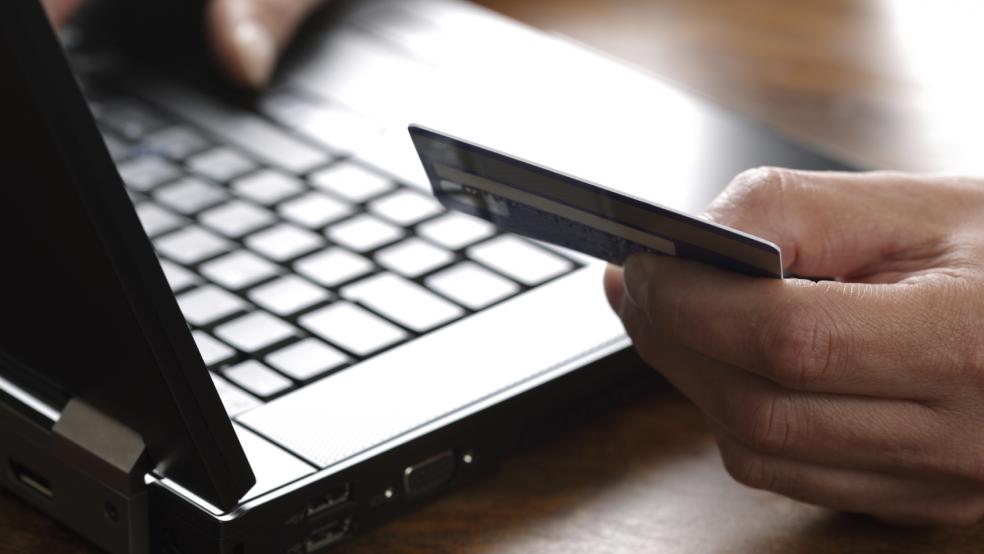Get your credit cards ready, ladies and gents. In an attempt to drum up new streams of revenue, a rapidly growing number of Internet and social media services are looking to challenge online retail giants such as Amazon.com and Alibaba to become players in e-commerce in their own rights.
Here’s what four big players have recently announced and an early look at which of their plans might succeed:
Pinterest
Earlier this week, Pinterest disclosed the highly anticipated addition of a buy button, long one of the top demands of the image-sharing site’s users.
The social network, where users “pin” pictures of everything from food to fashion and home decorations to vacation spots, boasts 70 million monthly users. Now those users will be able to purchase available products just by clicking a blue “buy it” button next to the red “pin it” button. After scrolling through different views of the product, users can check out using Apple Pay or a credit card.
Related: 10 Biggest Tech Flops of the Century
In its announcement, Pinterest said that it would have more than 2 million buyable pins available for Apple iOS users by the end of the month, with Android and desktop users seeing them in future releases. Pinterest’s initial retail partners include Nordstrom, Neiman Marcus and Macy’s, with retailers using the Shopify and Demandware platforms also able to post their products for purchase.
Pinterest may have the most to gain from adding these kinds of e-commerce options. Users previously had to scour the web if they liked an item they saw in one of the 50 billion pins on the site and wanted to buy it. In 2013, Pinterest launched “rich pins,” which allowed users to pull additional information, such as product pricing and availability, from the posts.
As of the last quarter of 2014, Pinterest was the second biggest social media driver of traffic to other websites, though it lagged far behind Facebook and looked to be losing momentum to its larger rival, according to Shareaholic. But some data suggests that Pinterest users may arrive at those other sites with a stronger intent to purchase. One recent survey found that 87 percent of active Pinterest users polled said that the social media site had helped them decide what to buy, and Pinterest boasts that it is the second largest source of traffic to Shopify stores, with its users spending more per order than those coming from Facebook and Twitter.
Instagram
On the same day, Instagram said it would roll out a new feature over the course of the year allowing retailers to link directly to products from their Instagram ads. Instagram had in the past been wary of the advertising business, only allowing carefully selected marketing partners to post photo and video ads on the service. But Facebook, which bought Instagram for $1 billion in 2012, is now attempting to monetize the photo-sharing site’s approximately 300 million monthly active users.
Related: When Will the Consumer Spending Surge Finally Happen?
The Instagram ads will have “Shop Now” buttons and other messages that take users outside of the app to directly sign up on a website, purchase a product or download an app. In addition, Instagram will enable its advertisers to manage and track their marketing campaigns, with expanded targeting options using demographics and interests found on Facebook. Smaller businesses will also be able to participate in the new advertising campaign.
Analysts at RBC Capital Markets reportedly estimated that Instagram ads could generate $1.3 billion to $2.1 billion in additional revenue for Facebook this year, contingent on how quickly the new ad offerings are introduced.
Google
The announcements from Pinterest and Instagram followed Google’s confirmation last month that it’s introducing a “buy button,” allowing users to make purchases directly from their search results. The company has been looking for ways to attract consumers as more and more users shop for items on the Web without going through its search service. Google clearly sees the future of e-commerce as being on the go, since its new button will initially only be available on search results called up on mobile devices.
Related: Why Google Keeps Struggling Against Facebook
The move could see Google become something more of a direct marketplace for its users rather than a service steering them to other destinations, putting the search giant more directly in competition with online retailing powerhouses like Amazon and eBay. The buy button allows for a more shoppable experience than on other sites, because the lack of website load time and mobile-friendliness will likely encourage more users to remain on the site until check out.
Snapchat
It may not have the scale of some of the other players getting into e-commerce, but Snapchat may have the right users to make serious strides. Last month, the company invested in Spring, a shopping app for clothing that launched in August 2014 — a deal that suggests it too is preparing to enter the e-commerce world. After testing the waters with select video ads earlier this year, Snapchat is attempting to solicit other big advertisers. The company’s pitch is that more than 60 percent of 13- to 34-year-old smartphone users in the U.S. are active on Snapchat and in total view more than 2 billion videos a day. Snapchat also says it has close to 100 million daily active users.
Related: Apple’s App Store Bigger Than Hollywood Box Office
Snapchat’s offering might have some natural limitations, though. Companies have been wary of using the service, Bloomberg reported, at least in part because it lacks some of the basic targeting and measurement tools that are standard in the digital advertising world. In addition, businesses aren’t receiving public feedback because there’s no way to comment on ad spots or share them.
Whoever ends up winning, the “Buy” button battle is on.
Top Reads from The Fiscal Times:




